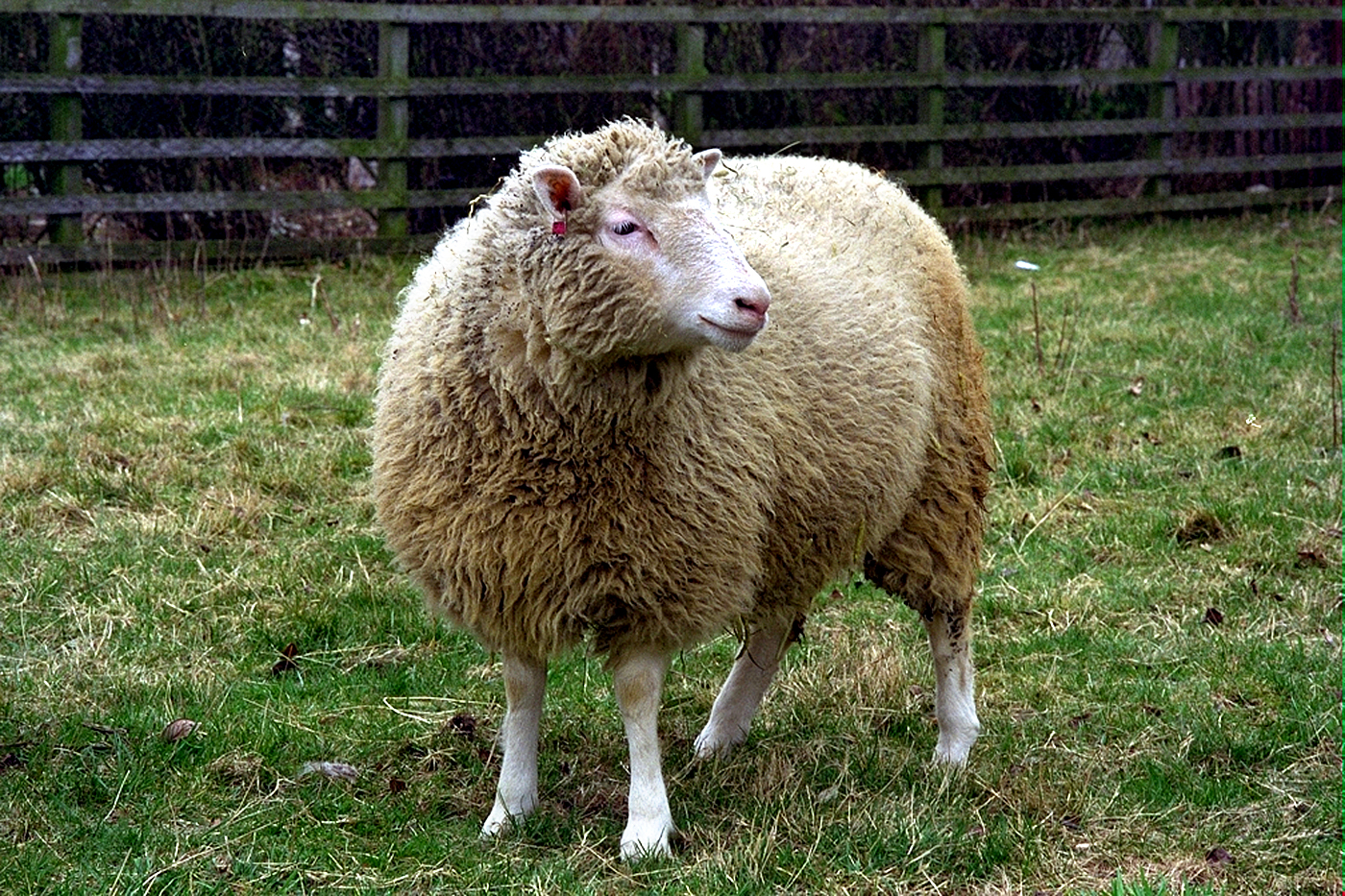20 Years After Dolly the Sheep, What Have We Learned About Cloning?

Today marks the 20th anniversary of the announcement of Dolly the sheep, the first mammal cloned from an adult cell. Her creation left a lasting impact on both the public and the field of developmental biology, experts say.
At the time, other researchers had managed to clone mammals by splitting embryos in a test tube and implanting them in adults. However, none had successfully used an adult somatic (body) cell to clone a mammal. Researchers at the Roslin Institute in Scotland were finally able to produce Dolly — cloned from the udder cell of an adult sheep — after 276 attempts, according to the National Human Genome Research Institute (NHGRI).
"For a developmental biologist, the ability to clone an advanced mammal was thought to be impossible," Lawrence Brody, director of the Division of Genomics and Society at the NHGRI, told Live Science.
Although Dolly was born in July 1996, Researchers announced Dolly's existence on Feb. 22, 1997. The delay in the announcement was due to the time needed to amass sufficient data on the project, check the data, write and get the manuscript published, said Bruce Whitelaw, the head of the Division of Developmental Biology at the Roslin Institute. [5 Fascinating Findings About Stem Cells]
Although British biologist John Gurdon had cloned frogs from the skin cells of adult frogs in 1958, researchers after him had failed to clone mammals such as mice, rats and pigs, despite trying for decades, Brody said. He added that many researchers began to feel there had to be "something different about mammals in the way their genome and genetic blueprints are packaged," and that cloning them would be impossible.

However, Dolly's creation "told us that was all wrong," Brody said.
That breakthrough would be crucial in the years to come. "It is rare that a single scientific story can have such a rapid, then sustained, impact" on science, Whitelaw said. Dolly had a massive scientific impact, especially through driving stem cell research and therapy, Whitelaw told Live Science.
Sign up for the Live Science daily newsletter now
Get the world’s most fascinating discoveries delivered straight to your inbox.
Ian Wilmut, the scientist who led the team that created Dolly, similarly told Live Science that research on Dolly led to both unexpected and very important results. "The birth of Dolly and the new understanding of the opportunity to change the functioning of cells made researchers consider other possible ways of modifying cells," Wilmut said. Later, in 2006, researchers in Japan found that introducing a set of four proteins into these skin cells led to a portion of them to "become very similar to embryo stem cells," where they had the ability to then differentiate into different adult cell types, Wilmut said.
"The whole stem-cell investigation was really stimulated by the fact that Dolly was able to be born, and stem cells still are quite promising as a means to be able to repair human tissues when they're damaged," Brody said. "We're obviously not there yet, but it is something that could be traced back to the success of Dolly."
There is also a link between the Dolly experiments and the so-called CRISPR technologies that allow scientists to edit genomes, Brody said: Both are breakthroughs of enormous magnitude, and could help researchers figure out ways to repair damaged or diseased tissues, he said. [Unraveling the Human Genome: 6 Molecular Milestones]

Another important result of the Dolly experiments is that they put science in the spotlight. "Dolly captured the world's imagination and allowed the world to hear about science," Brody said. "It's rare that the general public gets enamored [with] science, and it was clearly enamored with Dolly". The creation of Dolly also brought up important conversations about the ethical limitations of manipulating human cells and embryos, laying the groundwork for similar conversations today, Brody said.
Dolly died in February 2003, at age 6. (A typical life span for a sheep is about 10 to 12 years.) She had both offspring and clone "sisters," which were derived from the same batch of cells as Dolly. However, none of her offspring are alive today, Wilmut told Live Science. (Whitelaw also mentioned that the Roslin Institute no longer keeps sheep, as the funding for this program has run out.)
Since Dolly's creation, numerous other mammals have been cloned successfully, including mice, cattle, deer, horses and rats, according to the NHGRI.
Originally published on Live Science.










